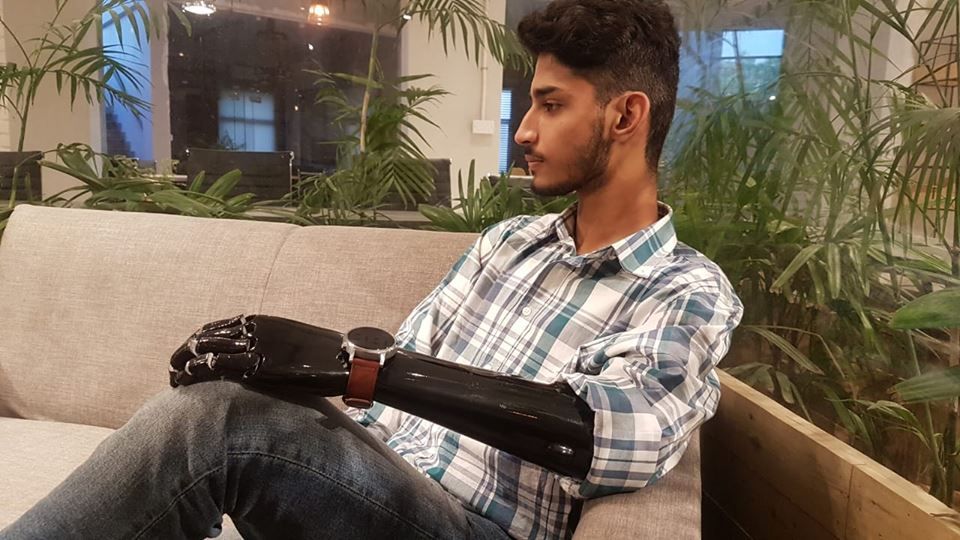The robotic arms made in Pakistan

In the final year of university, mechatronics engineering students Ovais Qureshi and Anas Niaz decided to build a “robotic prosthetic arm”. It took the pair two years to develop their final product and they eventually launched Bioniks, Pakistan’s first biomedical company providing 3D-printed prosthetics.
According to the World Health Organisation (WHO), there are about 30 million people around the world who require prosthetic limbs, but fewer than 20 per cent have them and these tend to be costly and heavy with limited to no movement.
“We started this project in 2015 with a normal mechanical arm and we began developing our own,” says Qureshi, chief executive officer at Bioniks.
Bionik’s prosthetic arm is fitted with sensors that enable users to move the prosthetic limbs by simply thinking about making the movements.
“The brain generates wave signals, which moves to the muscles and we extract that signal from sensors which translates it into arm motions,” says Qureshi. “We designed our own device and sensor and we use the data it generates. The AI [artificial intelligence] we use knows what sort of signal is for what action.”
Put simply, once the brain communicates that it wants to form a fist for example, the brain-waves are transmitted to the muscles connected to the prosthetic arm and the hand movements can then be carried out by the sensors.
Each prosthetic arm is unique to the user, with the residual limb analysed and scanned before the prosthetic is 3D-printed.
Traditionally prosthetic limbs are expensive, especially for children who require new ones as they grow. By 3D-printing the bulk of the limb, costs are substantially lowered. Bioniks’ prosthetics cost $2000 and are made in Pakistan, costing some $6000 less than other smart prosthetics.
“Most people who lose their hands are from the labour classes, we provide the prosthetic arm for free for those who cannot afford it in Pakistan,” says Qureshi.
In the Middle East, the devastating wars in Syria and Yemen have given rise to the number of people requiring prosthetic limbs. A report from WHO claims that more than 86,000 Syrians suffered wounds that led to amputation in 2017.
But it is not just wars that cause an increase in demand for prosthetics, the high rate of diabetes in the GCC puts a great deal of people at risk of amputation.
According to US-based Grand View Research, the global robotic prosthetics market is expected to reach $1.76 billion by 2025.
There are several companies around the world producing technologies similar to Bioniks, but it is an expensive endeavour, requiring a lot of research and development for a consumer base that usually does not earn enough to afford them.
For Bioniks, its mission goes beyond profit-making and instead sees its technology as a way to “facilitate humanity in every field of life”.
The company made headlines in Pakistan when it 3D-printed the country’s first bionic arm for a five-year old boy. Inspired by “Iron Man” film, the company created a bright red arm with a light beam, to give a superhero feel to the prosthetic, in a bid to boost the child's confidence.
“The next stage is to work on improving the functionality. We are working on the movement of individual fingers so that the user can do tasks like typing on a keyboard with the prosthetic arm,” says Qureshi.


